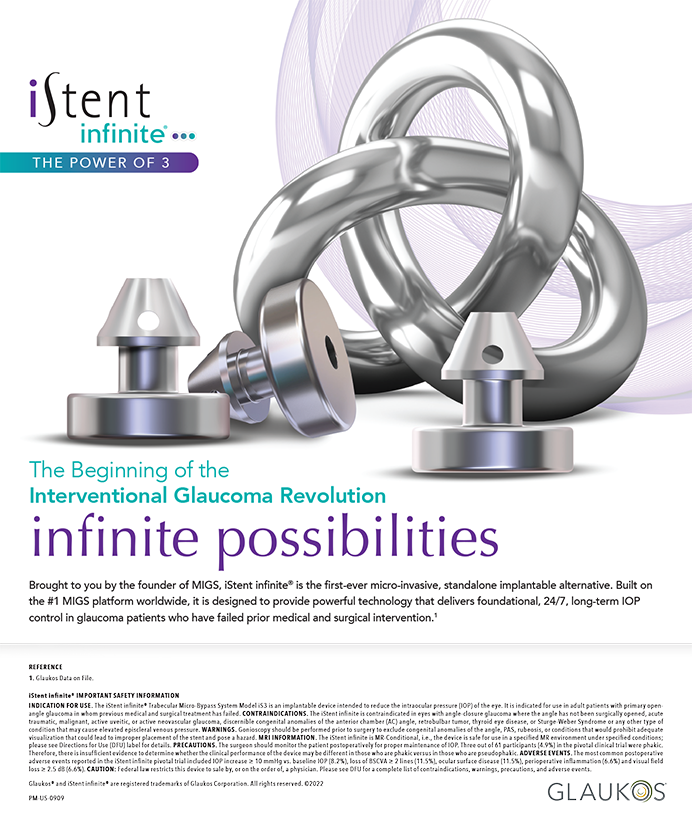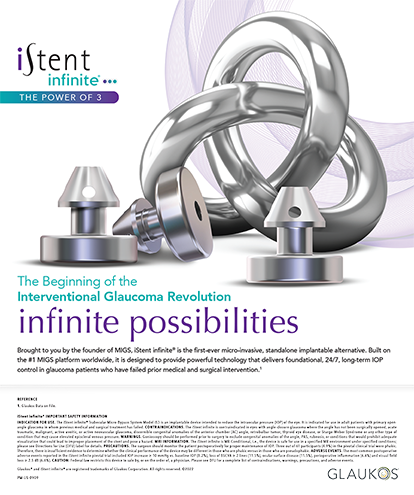Since the Centers for Medicare & Medicaid Services (CMS) began allowing surgeons to bill patients for the elective component of medically necessary cataract surgery in May 2005, practices have been offering patients premium upgrades or alternatives to traditional monofocal cataract procedures. This trend started with presbyopia-correcting and toric lens implants. CMS’ model allowed for additional fees for resources required, for the fitting of and visual acuity testing for a premium IOL (that exceeds the facility's or physician’s charges for resources furnished for a conventional IOL for cataract surgery) and the difference in cost between standard and premium IOLs.
CMS reviewed laser cataract surgery and ruled that no additional fees could be charged for the use of the laser during the procedure. According to the ruling, “Services that are part of cataract surgery with a conventional lens, including but not necessarily limited to the incision by whatever method, capsulotomy by whatever method and lens fragmentation by whatever method, may not be charged to the patient. … Medicare coverage and payment for cataract surgery is [sic] the same irrespective of whether the surgery is performed using conventional surgical techniques or a bladeless, computer-controlled laser.”1
In terms of reimbursement, a cataract procedure, whether performed with a laser or a manual technique, is billed to Medicare with the same procedural code and fee, which makes data collection and analysis challenging. If procedural volume is collected based on practice management reports, it is difficult to distinguish a laser cataract procedure from a traditional treatment, as the code for both is 66984.
DATA COLLECTION AND ANALYSIS
To effectively collect and analyze annual cataract volumes, practitioners need to fill in the data in the Table based on their practice.
Some practices collect these data from IOL and product information pack order sheets, but it is still necessary to know if the procedure was a conventional or laser treatment. Cathi Lyons, administrator at Gordon Weiss Schanzlin Vision Institute, recommends keeping a separate spreadsheet to track the conversion of premium IOLs, both for traditional and laser cataract treatments. If performing procedures in a separate surgery center, she suggests asking the center to provide data for tracking. Another alternative is coding the elective component for laser cataract treatments under 66999 with a $0.00 charge to keep a count.
Once the distribution of traditional and laser cataract procedures is determined, conversion rates for premium IOLs can be calculated to shed some light on a practice’s patterns and allow for benchmarking within the industry. According to Market Scope 2013 data from quarter 2, premium IOLs account for approximately 12% of the total US IOL procedures, and laser cataract procedures represent about 2% of the total procedures. In an independent survey by SM2 Strategic of surgeons using the femtosecond laser for cataract procedures, doctors reported 22% premium lens usage.2
Individual conversion rates vary greatly due to several factors such as regional economic conditions, surgeons’ acceptance of technology and IOLs, patients’ level of education about and awareness of elective options, and surgeons' understanding of the financial model for reimbursement.
BREAK-EVEN POINT
SM2 Strategic’s 2013 survey provides as example of how to calculate the break-even point for laser cataract surgery.2 The company collected data on fees for refractive packages before practices had the laser and with the laser to determine a weighted average for all lens types, including conventional monofocal, toric, and presbyopia-correcting IOLs. The average upcharge for the refractive package was $859 (Figure 1). The per-case margin after disposable costs was $532 (Figure 2). Fixed costs during a 5-year period were $603,400, meaning 1,134 cases were needed to break even over 5 years, which is equivalent to 227 cases per year or 19 cases per month. Based on a 30% utilization of the laser for cataract cases, the average volume of a practice would be 757 total cataract cases per year, including implantation of traditional monofocal IOLs. Participants in the 2012 survey averaged 57 laser cases per month, well above the break-even point of 19 per month (Figure 3).
CONCLUSION
According to Market Scope, 28% of the surgeons in attendance at the 2013 American Academy of Ophthalmology Annual Meeting already have access to a femtosecond laser, and another 25% plan to have access to the technology within the next year. With the LenSx Laser System (Alcon), Catalys Precision Laser System (Abbott Medical Optics), Victus (Bausch + Lomb), and Lensar Laser System (Lensar) on the market and the Femto LDV Z8 (Ziemer Ophthalmic Systems) platform expected later this year, this technology is here to stay.
Surgeons have found a viable financial model within the constraints of CMS’ guidelines that allows for a reasonable return on investment over a 5-year period based on a minimum volume of 19 cases per month volume. With that said, it is difficult to access data on relative use without a planned method of tracking laser treatments and correlated premium lens usage. A separate spreadsheet report is helpful to track data for benchmarking the effectiveness of laser cataract procedures performed at a practice and to evaluate conversion rates to premium IOLs.
Cindy Haskell, COE, is head coach at Spectacle Network, providing national data and usage trends on advanced technology to improve patients' outcomes. She helps practices more rapidly adopt those technologies that serve their patients best. She acknowledged no financial interest in the products or companies mentioned herein. Ms. Haskell may be reached at cindy@spectaclenetwork.com.
- Centers For Medicare & Medicaid Services. Laser Assisted Cataract Surgery and CMS Rulings 05-01 and 1536-R. http://cms.hhs.gov/Medicare/Medicare-Fee-for-Service-Payment/ASCPayment/Downloads/CMS-PCAC- IOL-laser-guidance.pdf. Published November 16, 2012. Accessed August 21, 2014.
- SM2 Strategic, Inc. Laser cataract surgery: spring 2013 survey results. http://sm2strategic.com/ lcs2013results. Published April 2013. Accessed August 21, 2014.


